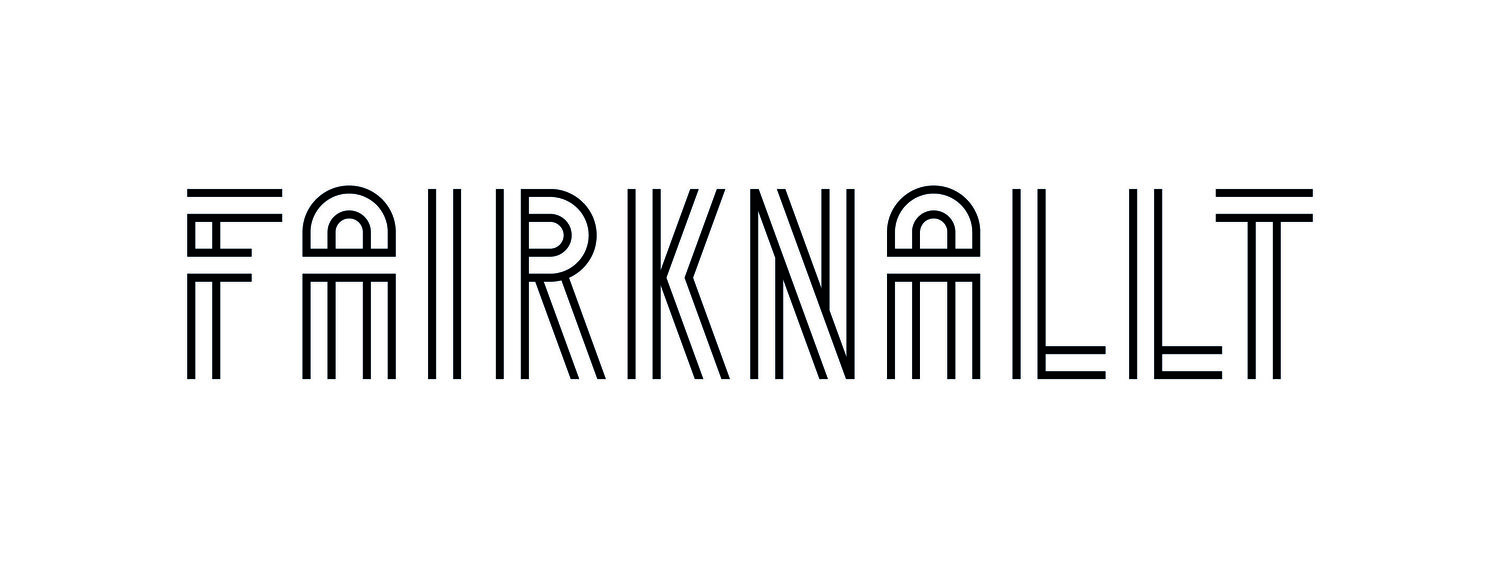Why fair fashion?
Die Frage sollte eher lauten: warum unfair fashion? Denn das, was in den meisten Innenstädten und Onlineshops als „normal“ verkauft wird, beutet Menschen in den Produktionsländern aus, schadet unserer Gesundheit, verseucht weltweit Ökosysteme durch Chemikalien, trägt zur Klimakatastrophe bei, hat einen großen Anteil an der Verschmutzung der Meere durch Mikroplastik und spielt eine Rolle beim Verlust von Biodiversität. Um nur einige der komplexen und gravierenden Auswirkungen zu nennen.
-
Die simple Antwort ist: weil es sie überall gibt, ihr Kauf kurzfristig befriedigt, sie unglaublich billig ist und weil Unternehmen sehr viel Geld in Werbung (statt in faire Produktion) stecken, die Menschen suggeriert, dass sie immer mehr davon brauchen.
Die Wahrheit ist, unfaire Mode ist auf lange Sicht nicht billig. Wir alle zahlen dafür, früher oder später. Die Kosten verstecken sich aber nicht sichtbar im Preis, sondern in den langfristigen Auswirkungen. Die Modeindustrie wird mit ca. 8% der weltweiten Klimaemissionen in Verbindung gebracht. Das ist für eine Branche, die nur eines der vielen Grundbedürfnisse von Menschen deckt, zu viel. Die Kleidungsproduktion hat sich laut Greenpeace zwischen 2000 und 2014 fast verdoppelt. Eine Zahl die nicht mit dem Wachstum der Bevölkerung korreliert, sondern mit erhöhtem und nicht nötigem Konsum. -
Durch die Globalisierung, also der Verlegung der Produktion aus Deutschland in Länder wie Bangladesch oder China, sind die Produktionskosten für Kleidung massiv gesunken. So ist die Modebranche seit ihrer Globalisierung ein Treiber für prekäre Arbeitsbedingungen geworden. Mode ist also nur so günstig zu kaufen, weil Menschen so schlecht für ihre Produktion bezahlt werden.
Die Auswirkungen dieser Wirtschaftsweise äußern sich in erhöhten Selbstmordraten unter Baumwollbäuer*innen, die sich bei großen Konzernen für ihr - meist gentechnisch verändertes - Saatgut verschulden müssen. Bei Missernten sehen viele keinen Ausweg aus den Schulden. Billige Mode ist ursächlich für Kinderarbeit, weil das Einkommen der Eltern nicht zum Leben reicht. Fast Fashion ist Auslöser für erhöhte Krebsraten und Krankheiten, weil die Menschen in der Produktion den toxischen Chemikalien ohne Schutz ausgeliefert sind.
Und auch beim Thema Umwelt schneidet die Mode schlecht ab. Denn für die Produktion werden große Mengen von toxischen Chemikalien eingesetzt. Das beginnt auf dem Feld mit dem Einsatz von Pestiziden oder dem Einsatz von Rohöl für Kunstfasern. Diese Arbeitsweise zieht sich, wie ein roter Faden durch die gesamte Produktionskette. Vom Reinigen der Materialien, über das Verspinnen und Weben, Färben und Nähen.
Aber kein Moment steht so sehr für unfaire Mode, wie der Einsturz des Rana Plaza Buildings in Bangladesch 2013, bei dem 1100 Menschen starben und mehr als 2000 verletzt wurden. Weil Textilfabrikaten ihre Mitarbeitenden zwangen in ein trotz Einsturzgefahr geräumten Fabrikgebäudes weiter zu arbeiten. Es ist die bis heute die größte Tragödie in der Modeindustrie und war auch ein Auslöser dafür, dass Fairknallt ins Leben gerufen wurde, um auf diese Missstände aufmerksam zu machen. -
All diese Gründe und noch viele weitere sprechen dafür, sich vom System der unfairen Mode bzw. Fast Fashion zu verabschieden und Fair Fashion als das neue Normal zu etablieren. Denn fair meint in diesem Sinne, dass Mensch, Ökologie, Tiere, Klima und kulturelle Aspekte der Mode bei der Produktion miteinander in Einklang gebracht werden, Kleidung länger genutzt, recycelt und wertgeschätzt wird.
Doch warum passiert das nicht? Weil man einem Kleidungsstück nicht ansieht, unter welchen Bedingungen es produziert wurde. Wie in vielen Bereichen ist die Produktion in weite Ferne gerückt und wir sehen nur noch das fertige Produkt. Und an diesem lässt sich nichts erkennen. Positiv gesagt kann man auch formulieren: nachhaltige Mode unterscheidet sich heute optisch nicht mehr von Fast Fashion.
Damit sich etwas verändert, müssen viele Faktoren zusammen kommen. Die Politik muss die Rahmenbedingungen/Gesetze schaffen, die Wirtschaft diese umsetzen und die Konsument*innen diese Produkte kaufen und ihren Konsum reduzieren.
Darum gibt es diese Plattform mit vielen Tipps, wie ihr künftig nachhaltiger konsumieren könnt. Zum Beispiel könnt ihr mit einigen Tricks faire Mode leichter erkennen oder bei Brands und in Stores kaufen, die wir für euch gecheckt haben. Und es gibt spannende und vor allem alternative Konsumformen, die helfen, nachhaltiger Freude an Mode zu haben.
The question should be: why unfair fashion? Fashion you can buy in most stores and online shops exploits people producing these clothes, harms our health, contaminates ecosystems with chemicals, contributes to the climate catastrophe, has a large share in the pollution of our oceans with microplastics and plays a role in the loss of biodiversity. To name just a few of the complex and serious impacts of fast fashion.
-
The simple answer is: because it's everywhere, it's short-term gratification, it's incredibly cheap, and companies spend a lot of money on advertising that tells people they need more and more of it. Unfortunately, instead of using that money to pay the people who produce our clothes fairly.
The truth is, unfair fashion is not cheap in the long run. Everyone pays for it, sooner or later. But the true costs are not visible on the price tag, but in the long-term effects. The fashion industry is associated with about 8% of global climate emissions. Too much for an industry that provides only one of the many basic needs of people. Clothing production almost doubled between 2000 and 2014, according to Greenpeace. A figure that does not correlate with the growth of our world population, but with increased and unnecessary consumption. -
Globalisation, i.e. the relocation of local production sites to countries like Bangladesh or China, has massively reduced the production costs for clothing. Thus, the fashion industry has become a driver for precarious working conditions. Fashion can only be sold so cheaply because people are paid so poorly for its production.
The effects of this way of doing business are expressed in increased suicide rates among cotton farmers. They have to go into debt with large corporations for their - mostly genetically modified - seeds and see no way out when harvests fail. Cheap fashion is the cause of child labour because the parents' income is not enough to live on. Fast fashion is the cause of increased cancer rates and diseases, because people in production are exposed to toxic chemicals without protection.
Fast fashion also scores poorly from an ecological point of view. Large quantities of toxic chemicals are used in its production. This begins already in the field with the use of pesticides or the use of crude oil for synthetic fibres. This way of doing things is the core of the entire production chain. From cleaning the materials to spinning and weaving, dyeing and sewing toxic chemicals are used and released to the environment.
But no moment stands for unfair fashion as much as the collapse of the Rana Plaza Building in Bangladesh in 2013. Under the collapsed building 1100 people lost their lives and more than 2000 were injured. Why? Because textile factory owners forced their employees to continue working in a building that had been evacuated due to the danger of collapsing. It is the biggest tragedy in the fashion industry to date and was. And is one of the reasons why Fairknallt was founded to draw attention to this catastrophe called Fast Fashion. -
All these reasons and many more are enough to leave behind the system of unfair fashion in order to establish fair fashion as the new normal. And fair in this sense means that people, ecology, climate and cultural aspects of fashion are brought into harmony with each other during production, and that clothing is used longer, recycled and valued.
But why doesn't this happen? Because you can't tell from a garment under what conditions it was produced. As in many areas, production has been outsourced and we only see the finished beautiful product. Or to put it positively, we can also say that sustainable fashion is no longer visually distinguishable from unfair fast fashion.
For something to change, many factors have to come together. Politics must create the framework conditions/laws, the economy must implement them and consumers must buy these products and reduce their consumption.
That's why we provide you this platform with lots of tips on how you can consume more sustainably in the future. For example, you can use some tricks to make it easier to recognise fair fashion or buy it from brands and stores that we have checked for you. And there are exciting and above all easy alternative forms of consumption that help you to enjoy fashion more sustainably.

